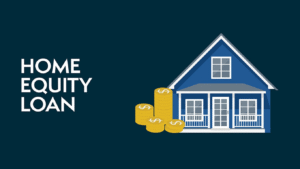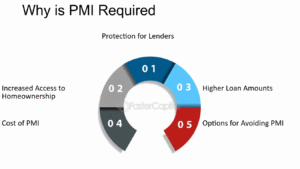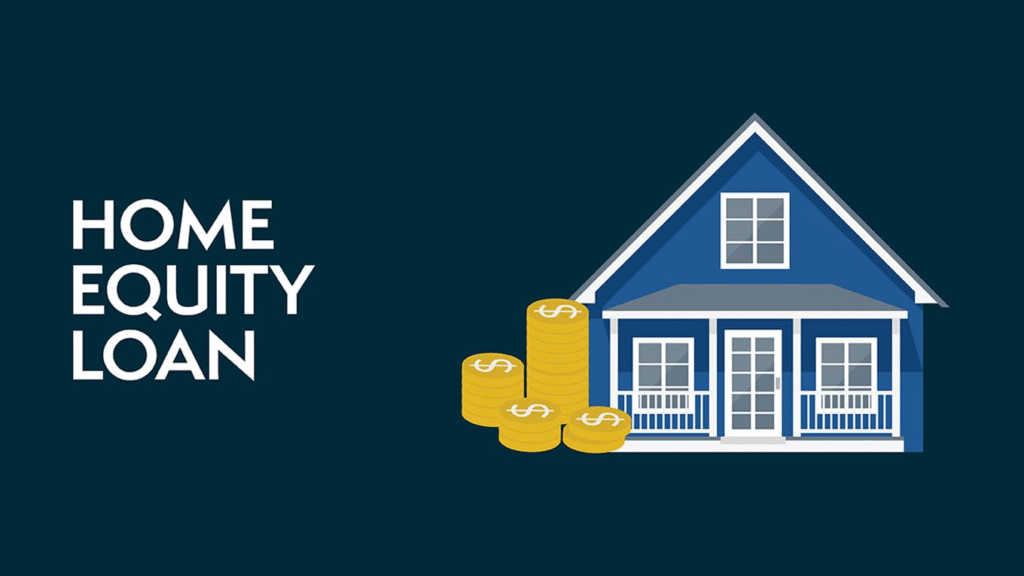
What are Subprime Mortgage Loans?
When it comes to home financing, not everyone has a perfect credit score. This is where subprime mortgage loans come into play. But what exactly are subprime mortgage loans, and how do they work? Let’s delve into this topic to understand how these loans can help those with less-than-perfect credit achieve their dream of homeownership.
Understanding Subprime Mortgage Loans
Subprime mortgage loans are a type of loan offered to individuals who have lower credit scores or a less-than-stellar credit history. These loans are designed to make home financing accessible to those who might not qualify for conventional loans due to their credit profile.
Defining Subprime Loans
Subprime loans, by definition, cater to those whose credit scores fall below the standard range required for prime loans. These scores typically fall below 620 on the FICO scale. Lenders view these borrowers as higher risk, which affects the loan terms offered. The primary aim of these loans is to provide a pathway to homeownership for those struggling to meet the stringent criteria of traditional loans.
Why Subprime Loans Exist
The existence of subprime loans addresses a significant gap in the financial market. Many individuals face challenges such as past financial missteps, limited credit history, or life events that have negatively impacted their credit scores. Subprime loans offer these individuals a chance to access credit, which can be crucial for personal and financial growth. Without these loans, many would be locked out of the housing market entirely, unable to pursue the stability and investment potential that homeownership can provide.
The Evolution of Subprime Lending
Subprime lending has evolved significantly over the years. Initially, these loans were more niche, catering to a smaller group of borrowers. However, the demand for homeownership and the subsequent housing boom saw an increase in subprime lending. This growth was not without its challenges, as seen in the 2008 financial crisis, where subprime lending practices were scrutinized. Post-crisis, regulations and lending practices have tightened, leading to more responsible lending to protect both lenders and borrowers
Key Characteristics of Subprime Loans

Subprime loans are characterized by higher interest rates compared to prime loans. This is because lenders are taking on more risk by lending to individuals with a higher likelihood of default. Additionally, subprime loans may have less favorable terms, such as higher fees and penalties for late payments
Higher Interest Rates
The hallmark of subprime loans is their elevated interest rates. These rates are set to compensate lenders for the increased risk associated with lending to individuals with poorer credit profiles. While prime loans might offer rates at or below market averages, subprime loans can be significantly higher, impacting the total cost of borrowing. Borrowers need to consider whether they can sustain these higher payments over the life of the loan.
Less Favorable Terms
Beyond interest rates, subprime loans often come with terms that are less favorable than those seen in prime loans. These can include higher fees, such as origination fees and penalties for early repayment. Additionally, subprime loans might have less flexible terms when it comes to restructuring or refinancing, making it crucial for borrowers to fully understand their commitments before signing.
Adjustable Rate Features
Many subprime loans come with adjustable-rate features, meaning the interest rate can change over time. Initially, borrowers might benefit from a lower introductory rate, but this can increase significantly after a set period. For borrowers, this means potential fluctuations in monthly payments, which can strain finances if not properly anticipated and managed.
How Subprime Mortgage Loans Work

To better understand subprime mortgage loans, it’s important to know how they operate. Here’s a breakdown of the process:
Loan Application and Approval
When applying for a subprime mortgage loan, the lender will assess your credit score, income, and debt-to-income ratio. While a low credit score might disqualify you from a conventional loan, subprime lenders are more lenient. They focus on other factors, such as your income and ability to repay the loan.
The Application Process
The application process for subprime loans begins with a thorough financial assessment. Borrowers submit detailed information about their income, assets, and liabilities. Lenders use this data to evaluate the borrower’s ability to repay the loan. Unlike conventional loans, which heavily weigh credit scores, subprime lenders look beyond, considering other financial behaviors and patterns.
Approval Criteria
Approval for subprime loans hinges on more than just credit scores. Lenders assess the debt-to-income ratio, which indicates the borrower’s ability to manage additional debt. They also consider employment stability and income consistency. This broader approach allows lenders to accommodate borrowers who might be financially responsible but have a low credit score due to past issues.
The Role of Down Payments
Down payments play a significant role in subprime loans. A larger down payment can mitigate the lender’s risk, potentially resulting in more favorable loan terms. Borrowers are encouraged to save for a substantial down payment, which might help secure better interest rates or lower fees, ultimately making the loan more manageable.
Interest Rates and Terms
Interest rates for subprime loans are typically higher than those for prime loans. This compensates lenders for the increased risk. Additionally, subprime loans may have adjustable interest rates, meaning that the rate can change over time. It’s crucial to understand the terms of your loan and how changes in interest rates could affect your payments.
Understanding Rate Structures
Subprime loans often feature complex rate structures. Borrowers might encounter hybrid adjustable rates, which start with a fixed rate for a few years before adjusting. Understanding these structures is vital, as they determine how payments might change over time. Borrowers should be aware of potential rate caps and floors that could impact their financial planning.
The Impact of Interest Rates on Payments
The interest rate directly affects the monthly payment amount. For subprime borrowers, higher rates mean higher payments, which can strain budgets. It’s essential to calculate potential payment scenarios, especially if the loan features an adjustable rate. Planning for possible increases helps borrowers avoid financial distress down the line.
Strategies for Managing Loan Terms
Managing subprime loan terms requires strategic planning. Borrowers should explore options like refinancing if credit scores improve, potentially qualifying for better rates. It’s also beneficial to maintain open communication with lenders, who might offer restructuring or payment modification options if financial difficulties arise
Pros and Cons of Subprime Mortgage Loans

Subprime mortgage loans have both advantages and disadvantages. Before deciding whether to pursue this type of financing, it’s important to weigh the pros and cons.
Advantages
- Accessibility: Subprime loans make home financing accessible to individuals with poor credit, offering them a chance to own a home.
- Opportunity for Credit Improvement: Making regular, on-time payments on a subprime loan can help improve your credit score over time.
- Flexible Qualification Requirements: Subprime lenders often have more lenient qualification criteria than traditional lenders.
Accessibility and Homeownership
One of the primary advantages of subprime loans is their accessibility. These loans open the door to homeownership for individuals who might otherwise be excluded due to credit limitations. For many, this represents a significant step toward financial independence and stability, allowing them to build equity and secure a stable living environment.
Building Credit Through Regular Payments
Subprime loans offer a pathway to credit improvement. By making consistent, on-time payments, borrowers can demonstrate financial responsibility. Over time, this can lead to an improved credit score, potentially qualifying them for better loan terms in the future. This aspect of subprime loans can be a crucial factor for those looking to rebuild their financial profiles.
Lenient Qualification Criteria
The flexibility of subprime lenders in their qualification criteria is another advantage. Unlike traditional lenders that focus heavily on credit scores, subprime lenders consider a broader range of factors. This approach allows individuals with unique financial circumstances to qualify, providing an opportunity that might not exist with conventional loans.
Disadvantages
- Higher Interest Rates: The cost of borrowing is higher due to elevated interest rates, which can increase the overall cost of the loan.
- Risk of Foreclosure: If you’re unable to keep up with the payments, there’s a higher risk of foreclosure due to less favorable loan terms.
- Potential for Adjustable Rates: Many subprime loans come with adjustable rates, which can lead to fluctuating monthly payments.
The Financial Burden of Higher Interest Rates
The most apparent disadvantage of subprime loans is the higher interest rates. These rates increase the total cost of borrowing, potentially making the loan significantly more expensive over its term. Borrowers must carefully assess whether they can manage these costs alongside other financial obligations.
Increased Risk of Foreclosure
With higher interest rates and potentially less favorable terms, the risk of foreclosure is more pronounced with subprime loans. Borrowers who struggle to keep up with payments might face losing their homes, a situation that can have long-term financial and emotional consequences. It’s crucial for borrowers to have a realistic repayment plan and a financial buffer to mitigate this risk.
Managing Adjustable Rate Challenges
The possibility of adjustable rates adds another layer of complexity to subprime loans. Borrowers must be prepared for potential increases in their monthly payments, which can occur if interest rates rise. Understanding the terms and preparing for adjustments are essential steps in managing this risk and ensuring long-term financial stability.
Who Should Consider a Subprime Mortgage Loan?
Subprime mortgage loans are not for everyone, but they can be a viable option for certain individuals. Here are some scenarios where a subprime loan might be considered:
Individuals with Poor Credit
If you have a low credit score and cannot qualify for a conventional loan, a subprime mortgage may be your best option for homeownership. It’s important to ensure that you can manage the higher interest rates and payments.
Evaluating Your Financial Situation
Individuals with poor credit should begin by evaluating their overall financial situation. This includes assessing income stability, existing debt, and monthly expenses. Understanding these factors helps determine whether a subprime loan is a viable option and if the borrower can handle the associated costs.
Planning for Higher Payments
For those with poor credit, planning for higher payments is essential. Creating a detailed budget that accounts for the increased costs associated with subprime loans can prevent financial strain. It’s important to ensure that housing costs remain a manageable percentage of total income.
Seeking Financial Counseling
Before committing to a subprime loan, individuals with poor credit might benefit from financial counseling. Professionals can offer guidance on managing debt, improving credit, and exploring alternative financing options. This support can be invaluable in making an informed decision.
Those Seeking to Rebuild Credit
For individuals looking to improve their credit score, a subprime loan can provide an opportunity. By consistently making on-time payments, you can gradually rebuild your credit profile.
Establishing a Payment History
Rebuilding credit through a subprime loan requires establishing a solid payment history. Consistently making on-time payments is crucial, as it demonstrates reliability to credit bureaus. Over time, this positive behavior can lead to an improved credit score and better loan opportunities.
Monitoring Credit Progress
Borrowers should regularly monitor their credit reports to track progress. Keeping an eye on credit scores helps identify improvements and areas needing attention. This proactive approach ensures borrowers are aware of their credit standing and can make informed financial decisions.
Exploring Refinancing Options
As credit improves, borrowers might consider refinancing their subprime loan. Refinancing can lead to better interest rates and terms, reducing overall borrowing costs. This option provides a pathway to transitioning from a subprime to a prime loan, improving financial stability.
Borrowers with Limited Options
If you’ve exhausted other financing options and still wish to purchase a home, a subprime mortgage might be the solution. However, it’s crucial to carefully evaluate the terms and conditions to ensure they align with your financial situation.
Assessing Other Financing Avenues
Borrowers with limited options should first assess other potential financing avenues. This might include exploring government-backed loans, credit unions, or local housing programs. Understanding all available options ensures borrowers make informed decisions tailored to their unique circumstances.
Understanding Loan Terms Thoroughly
For borrowers considering subprime loans, understanding the loan terms is vital. A thorough review of interest rates, fees, and potential penalties helps borrowers prepare for any financial challenges. Engaging with a financial advisor can provide additional insights and guidance.
Preparing for Long-term Commitments
Subprime loans represent a long-term financial commitment. Borrowers need to consider their ability to sustain payments over the loan’s duration. Building a financial plan that accounts for potential income changes or unexpected expenses is crucial for maintaining homeownership stability.
Alternatives to Subprime Mortgage Loans

Before committing to a subprime mortgage loan, consider exploring alternative options that may offer more favorable terms:
FHA Loans
FHA loans are backed by the Federal Housing Administration and designed for low-to-moderate-income borrowers. They often require a lower down payment and have more lenient credit requirements compared to conventional loans.
Benefits of FHA Loans
FHA loans offer several benefits, including lower down payment requirements, often as low as 3.5%. This makes them accessible to borrowers with limited savings. Additionally, FHA loans feature more lenient credit criteria, allowing individuals with lower credit scores to qualify for home financing.
Understanding FHA Loan Requirements
To qualify for an FHA loan, borrowers must meet certain requirements. These include a stable employment history and a manageable debt-to-income ratio. Understanding these criteria helps potential borrowers assess their eligibility and prepare the necessary documentation.
Navigating the FHA Loan Process
The FHA loan process involves several steps, including pre-approval, property appraisal, and underwriting. Borrowers should familiarize themselves with each stage to ensure a smooth application process. Working with an experienced lender can provide valuable assistance and guidance.
VA Loans
VA loans are available to veterans and active-duty service members. They offer competitive interest rates and do not require a down payment, making them an attractive option for eligible borrowers.
Eligibility for VA Loans
VA loans are exclusive to veterans, active-duty service members, and their families. Understanding eligibility criteria is essential for those interested in this option. The VA provides a Certificate of Eligibility, which is required for the application process and verifies a borrower’s qualification for the loan.
Advantages of VA Loans
One of the primary advantages of VA loans is the absence of a down payment requirement. This feature makes homeownership more accessible to eligible individuals. Additionally, VA loans typically offer competitive interest rates and limited closing costs, enhancing their appeal.
The VA Loan Application Process
The VA loan application process involves obtaining a Certificate of Eligibility, selecting a lender, and completing the loan application. Borrowers should prepare necessary documentation, including proof of military service and income verification. Understanding the process ensures a streamlined experience.
USDA Loans
USDA loans are designed for rural and suburban homebuyers who meet certain income requirements. These loans offer zero down payment options and competitive interest rates.
Understanding USDA Loan Eligibility
USDA loans have specific eligibility requirements, including income limits and property location criteria. Borrowers must reside in designated rural or suburban areas to qualify. Understanding these requirements helps potential borrowers determine their eligibility for this loan option.
The Benefits of USDA Loans
USDA loans offer several benefits, such as zero down payment options and competitive interest rates. These features make them attractive to first-time homebuyers and those with limited savings. Additionally, USDA loans often have lower mortgage insurance costs compared to other loan types.
Navigating the USDA Loan Process
The USDA loan process involves pre-qualification, property appraisal, and underwriting. Borrowers should work with a knowledgeable lender familiar with USDA loans to ensure a smooth experience. Understanding each step and preparing necessary documentation is key to successful loan approval.
Conclusion
Subprime mortgage loans can be a useful tool for those with poor credit to achieve homeownership. However, it’s important to fully understand the terms and potential risks associated with these loans. By weighing the pros and cons and considering alternative options, you can make an informed decision that aligns with your financial goals. Remember, owning a home is a significant commitment, and careful planning is key to a successful home financing journey.
Making Informed Decisions
When considering subprime loans, making informed decisions is crucial. Borrowers should carefully evaluate their financial situation, understand loan terms, and explore alternative options. This comprehensive approach ensures that the chosen path aligns with long-term financial goals and stability.
The Importance of Financial Education
Financial education plays a pivotal role in navigating home financing options. Borrowers should seek resources and guidance to enhance their understanding of mortgage products and terms. This knowledge empowers individuals to make informed choices and avoid potential pitfalls.
Planning for a Secure Financial Future
Successful homeownership requires strategic planning and financial discipline. Borrowers should develop a long-term financial plan that accounts for potential changes in income and expenses. By prioritizing financial stability, individuals can enjoy the benefits of homeownership while minimizing risks.




